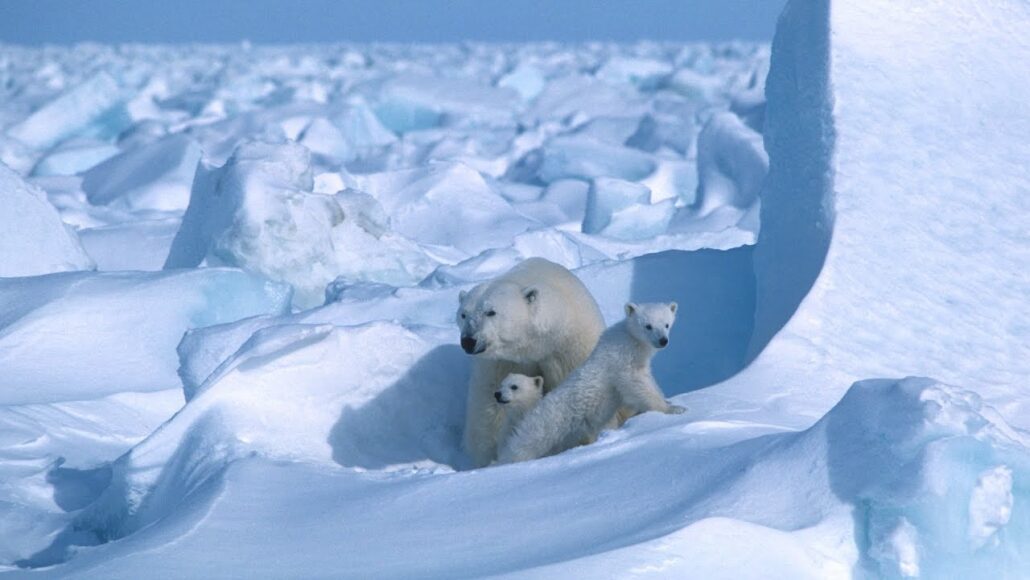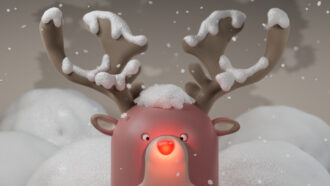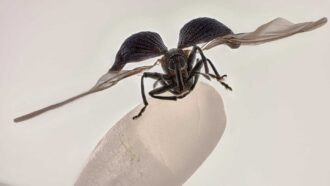Polar bears in trouble
Melting ice is bad news for polar bears that live in northern Alaska.

A mother polar bear often has two cubs at a time in a den dug into the shore or on floating ice. Baby cubs stay with their mothers for more than 2 years.
Steven C. Amstrup
Share this:
- Share via email (Opens in new window) Email
- Click to share on Facebook (Opens in new window) Facebook
- Click to share on X (Opens in new window) X
- Click to share on Pinterest (Opens in new window) Pinterest
- Click to share on Reddit (Opens in new window) Reddit
- Share to Google Classroom (Opens in new window) Google Classroom
- Click to print (Opens in new window) Print
By Emily Sohn
Alaskan polar bears are masters of ice. Even during the frigid days of winter, these furry white creatures don’t hibernate in cozy dens, like other bears do. Instead, they go north, hunting for seals living in the ice-covered water.
In recent years, however, Earth’s climate has been getting warmer, and ice near the Poles has been melting. Now, a new study by scientists at the U.S. Geological Survey (USGS) in Anchorage, Alaska, shows that disappearing ice is changing polar bear behavior.
In particular, slightly more than half of pregnant polar bears used to give birth in dens on solid blocks of ice that were floating out at sea. Today, they’re more likely to dig their dens on or near land. The consequences of the shift are unknown.
When the scientists began this study, their goal was to see whether they could use radio collars that communicate with space satellites to see if bears were snuggled in dens.
The collars worked. Over the course of testing, however, the researchers discovered some surprising data concerning the locations of these dens. Between 1985 and 1994, 62 percent of the dens that the satellite system detected were on floating sea ice. Between 1998 and 2004, however, only 37 percent of dens were floating out at sea.
Disappearing ice is the best explanation for the shift, the researchers say. Other studies have shown that 27 percent of sea ice in the Arctic that stays frozen from year to year has disappeared during the past 30 years. So there’s now much less space for dens. Moreover, as this permanent ice melts, the remaining ice becomes less stable. These conditions are unappealing to mother polar bears, who want a safe place to give birth and keep thir cubs in a protected den for several months.
“If you’re a mother bear, you probably want to be on ice that’s pretty doggone stable,” says USGS researcher Steven Amstrup.
For now, Alaska’s polar bears seem to prefer returning to land rather than taking the risk of giving birth on shaky ice. That solution might not work forever, however, especially if the ice keeps melting.
“The biggest concern,” Amstrup says, “is that [as] the ice continues to retreat, there may come a time when bears can’t return to land.”
For polar bears, the future is uncertain, says polar bear researcher Ian Stirling of the Canadian Wildlife Service, based in Edmonton, Alberta.
“As the climate is warming and we’re losing ice,” Sterling says, “you don’t have to be a rocket scientist to know that that’s going to have a significant negative effect on an animal that depends on ice for life.”







